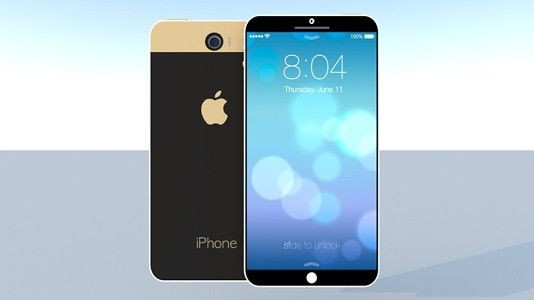iPhone 6 on Release Date is Cheaper, Slimmer & More Powerful with 64-Bit A8 PoP SoC Chip

Apple's first iOS phablet, the iPhone 6, is likely a lean and mean monster on release date - powered by an A8 processing chip that fully adheres to 64-bit mobile computing standard.
And the best part is the high possibility that Apple will sell the next iPhone in more attractive price tags just so to replicate the company's record $13+ billion profits in the December 2013 quarter, largely anchored on 51 million of iPhone units cleared in the last three months of last year.
That the iPhone 6 is a powerhouse of a device is practically confirmed in a new DigiTimes report, which indicated that production of 64-bit A8 CPU will commence soon and will ramp up in April 2014.
Main responsibility of production duties for the 20nm process technology will fall on Taiwan Semiconductor Manufacturing Company (TSMC) as hinted by Apple's finalised deal with the Asian manufacturing firm in the second half of 2013.
However, two more players will be part of the tech giant's supply chain landscape, DigiTimes said, suggesting that Apple would like to ensure that its 2014 production and release calendars for iOS devices will play out as scheduled.
From A7 in the iPhone 5S, iPad Air and iPad Mini in 2013, Apple is expected to upgrade to A8 in powering its iDevice line up for 2014, which analysts said will be headlined by the large-screen iPhone 6. The chance is high that the upcoming smartphone is coming out in two screen sizes.
But the question of the iPhone 6's body build is seemingly hinted by the same DigiTimes report, stating that "Apple's A8 chip will be a package-on-package (PoP) SoC solution comprising processors and mobile DRAM in a single package."
According to Gotta Be Mobile, by squeezing CPU and RAM in one package, device engineers are given more optimal use of motherboard space. With fewer components jostling for space inside, a new device is more likely to lose weight and volume.
So for the iPhone 6, it could mean a thinner frame and lighter overall build but not necessarily compromising on muscles as A8 on 64-bit is expected to deliver more than sufficient amp that Apple has envisioned for its first phablet.
And the incredible iPhone 6 killer features will not stop there. Analysts suggest that the smartphone pricing model is going slightly south as manifested by Apple's first quarter performance for financial year 2014.
Apple missed its target of 56 million units for Q4 2013 but shipped out a total of 51 million iPhone during the holiday quarter. According to BGR, Counterpoint Research attributed the bulk of Apple's iPhone sales in the period to aggressive marketing.
"What we saw was a little bit surprising but essentially 'calculated aggression' from Apple to ward off competition by offering so many discounts and giveaways for just a three month old portfolio, a very hard deal to resist for consumers" the research firm was reported by BGR as saying.
With the success, Apple is more likely to apply the same model for its iPhone 6 thrust, contradicting earlier reports that suggested the next iPhone will be pricier due to its planned feature upgrades that require upscale components.
It remains unclear though what the specific iPhone 6 price tag will be if indeed Apple's pricing decision move down in consumers' favour.
What is clear is the iPhone release date is peg for the second half of 2014, between July and September and bearing the following specs and features: a Liquidmetal casing, sapphire glass cover and coating, enhanced TouchID and other security features and iOS 8.





















